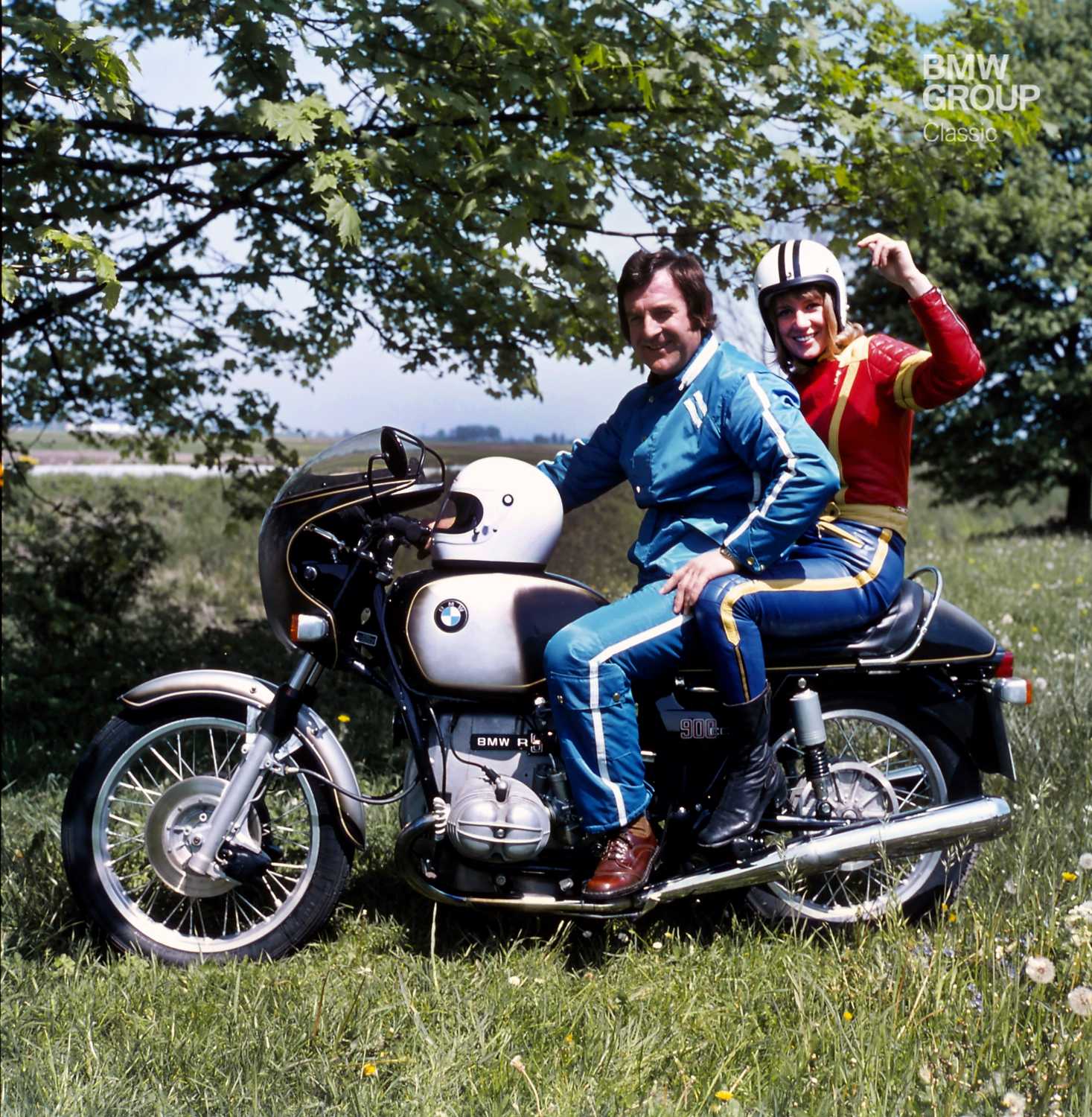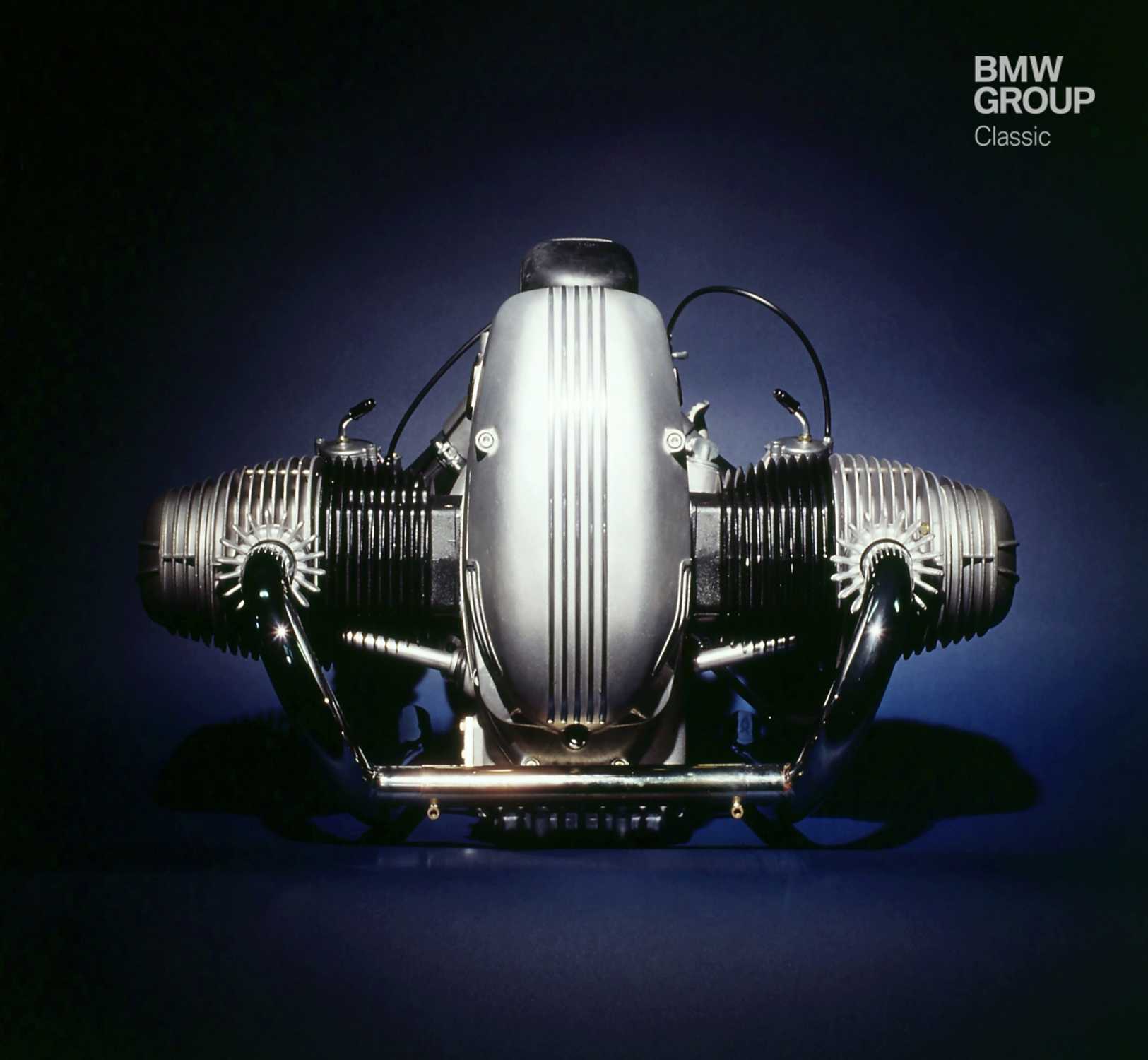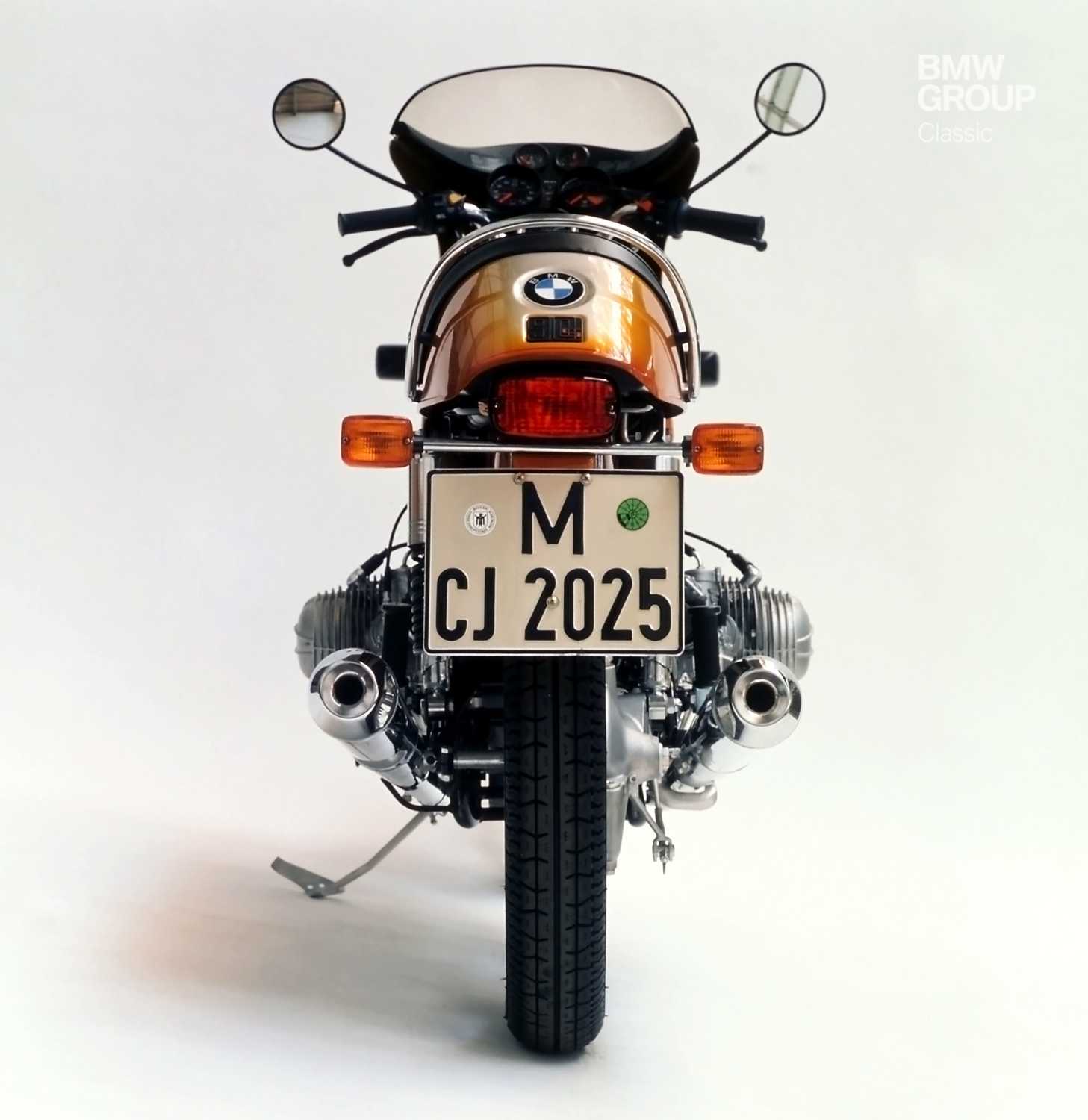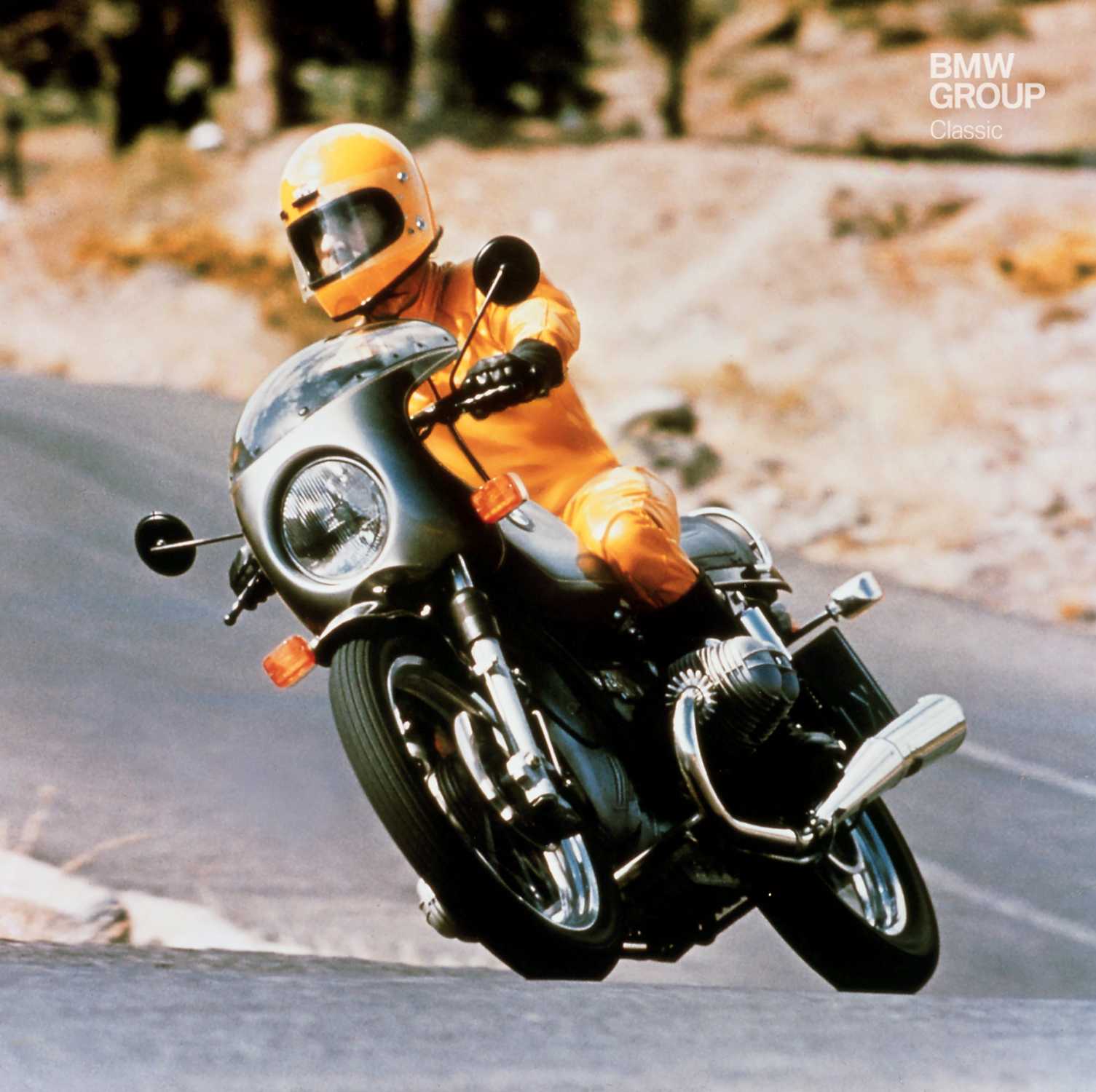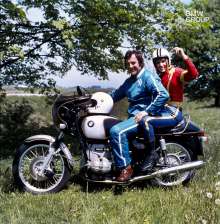Daytona Orange. The name alone sends out a powerful statement of intent and stirs the curiosity. Against the garishly colourful backdrop of the 1970s you had to come up with something special to stand out. The BMW R 90 S pulled off that trick from the word go. Eye-catching paint finishes in “smokey” tones, such as Silver Smoke and the aforementioned Daytona Orange, even got died-in-the-wool car drivers talking. Colour adverts presented the new Bavarian Dampfhammer (steam hammer) against a monochrome black background. It was quite the show-stopper.
A new era.
In the mid-1950s people started abandoning their motorcycles in favour of cars, but that trend went into reverse again in the decade that followed. A very different group were now riding bikes. These were people who could certainly afford a car (and often owned one as well), but who also loved the feeling of taking to the road on two wheels in the open air. Motorcycling was no longer a fall-back or stop-gap option, but a lifestyle in its own right. Sportiness was in demand, so a powerful machine fitted the bill rather nicely.
While many famous brands missed the boat and disappeared forever, BMW fared well with its solid, tried-and-tested models. And it wasn’t only policeman around the world who enjoyed riding a BMW; every kid at the time could pick out a BMW in its customary black paintwork and white lines, with its unmistakeable boxer engine and sonorous boxer soundtrack.
However, there was also talk of a looming threat to BMW’s supremacy from the Far East. Japan was growing inexorably into a new export market, and its many successful brands were sending ripples through a market experiencing significant change. Power and design were becoming more important than ever.
Muth to the rescue.
True to form, BMW picked up the challenge. New ideas were required, unconventional ones at that. Where previously engineers would come up with a design for a new motorcycle almost as an afterthought, the new model was penned by a designer. Hans A. Muth, whose original remit covered car interiors, wasted no time in defining a powerful new appearance with an eye to the future. Its front fairing and rear-end design gave the new R 90 S a sporty, cutting-edge look.
The resourceful team of engineers then set about extracting 67 hp from its motor – a strapping output but still within the means of the bike’s outstanding chassis, with its dual disc brake on the front fork. A R 90 S was capable of almost 200 km/h (124 mph) and made quite a mark on the streetscapes of the time; stunned passers-by would turn on their heels to get a second look. The R 90 S was a roaring success and contributed greatly to the new image of the BMW Motorrad brand.
Trendsetter.
Next up in its stead was the R 100 RS, whose consistent and almost futuristic styling made BMW a leader in the market. Essentially, though, there was little it needed to add to the slim lines of the R 90 S, which was a stripped back design by today’s standards and available in either elegant Silver Smoke or confident Daytona Orange. It has become a classic in the finest sense, a motorcycle you’re always pleased to set eyes on again. The Italians were also fans; “Bella macchina!” came the call from the roadside when you crossed over the border from Germany.
Facts and figures:
BMW R 90 S, 1973 – 76
67 hp at 7,000 rpm, 898cc, torque: 76 Nm (56 lb-ft)
Top speed: 198 km/h (123 mph)
Five gears
Number produced: 17,465
Price in 1973: DM 8,510.00
